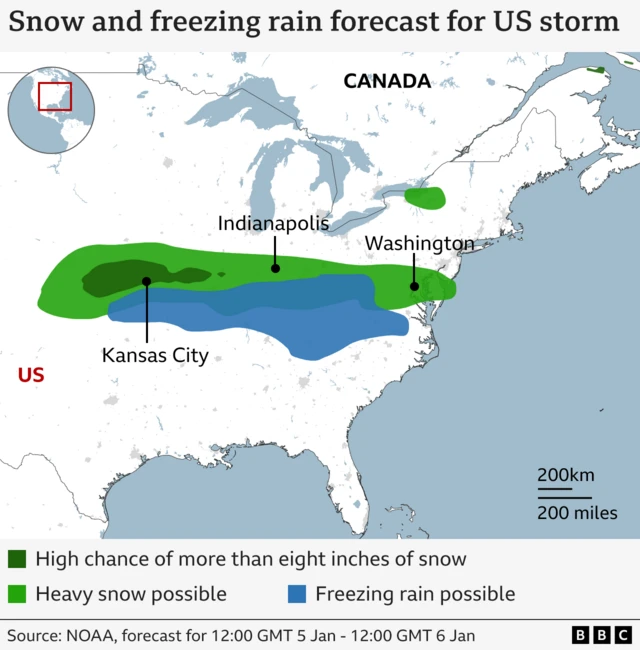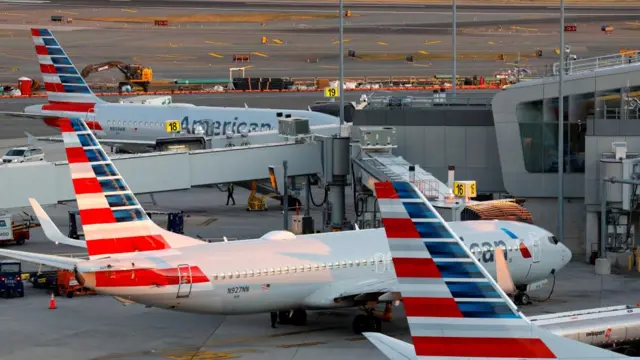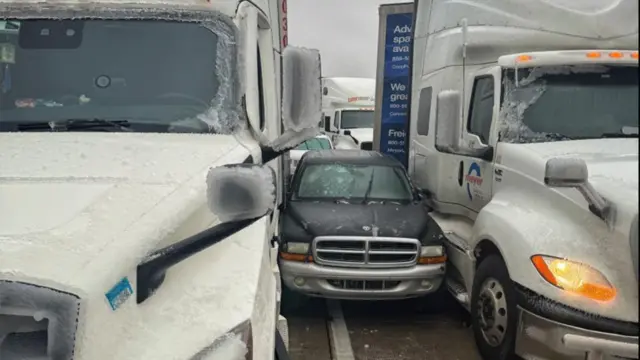Air travel plagued with cancellationspublished at 18:18 GMT 5 January
An update now on air travel in the US, with travellers already facing significant disruption as Storm Blair sweeps the country.
The total number of domestic, inbound and outbound flights delayed has now surpassed 3,300, while cancellations have topped 1,700.
Kansas City International Airport and St. Louis Lambert International Airport in Missouri continue to be the worst affected.





